FOAM, HEMIPTERA, AND AN EVENING TO REMEMBER
The evening is almost a character in each of these evening posts I've been publishing quite often lately. The flora and fauna change, but the evening is always there, providing a thematic backbone that creates a feel of a series slowly shaping out. In this post, or an episode of sorts, there is another contender for the place of the main protagonist. It is not a single plant or animal, but a pretty large group of species defined as the order Hemiptera.
The place where I took these photographs on the last day of April is Palera, the coastal area near the village of Liznjan. From the place where I live, that's about five or six kilometers.
These are the seeds of the common sowthistle (Sonchus oleraceus).
Here you can take a look at the bigger chunk of the plant. On the other side of the seed head shown in this and the previous photograph ...
... a bug from the Rhopalidae family was feeding.
The insect uses the proboscis to pierce the seed and get the precious nutrients the plant stores there.
Rhopalidae are commonly known as the scentless plant bugs. The scientific name of this particular species with showy red coloration combined with some interesting black markings is Corizus hyoscyami. The following photograph ...
... leads us back to the other side of the same Sonchus oleraceus seed head, a side shown a bit earlier. You can see a mating pair of Stictopleurus punctatonervosus bugs feeding on the seeds. I mean, only the female was feeding, while the male was there only as an attachment.
This species also belongs to the Rhopalidae family.
Another mating pair was resting on the flower bud of the same plant.
Here, in a shot taken a bit later, you can see a portrait of another common sowthistle. In the following photograph ...
... I zoomed in a bit more on the flower buds.
Here you can see the entire plant at sunset. A few minutes later, on that same Sonchus oleraceus ...
... I photographed a shield bug. A species from the Pentatomidae family. Its scientific name is Carpocoris purpureipennis.
The bug was cleaning its proboscis after feeding on juice in the stem of the plant. Not far from there ...
... another bug of the same species was resting, partially hidden in the folding of an elongated leaf situated on the upper part of the pretty tall Rumex crispus plant.
This shot shows the same scene from a different angle. It was an angle that allowed me to create a much better and memorable composition, with which I'm very satisfied.
Here you can see the entire plant and a bit of surrounding scenery, all photographed in the atmospheric low light at dusk. If you take a bit of time to explore the details in the above photograph, you may notice a bit of foam near the base of the plant.
This shot shows the same thing up close, you can't miss it here.
The same kind of foam can be seen on different kinds of plants scattered all across the field.
In this and the previous photograph, the foam is hanging on the toothed bur clover (Medicago polymorpha), very close to the ground.
This wide shot shows plenty of Medicago polymorpha in the evening scenery.

To show you what this spittle-like phenomenon is about, I decided to partially remove the foam found on de folded leaf of the Rumex crispus plant, the foam shown in the above picture, photographed in natural light.
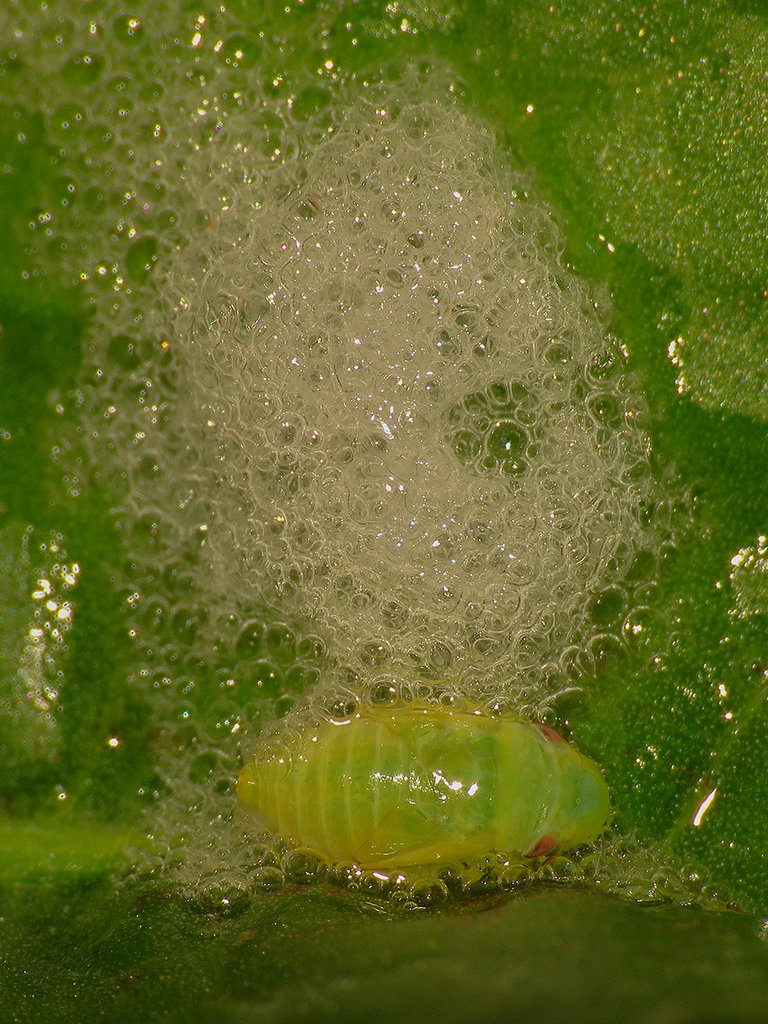
The spittle is a shelter, a nest of sorts.
The nymphs of the Philaenus spumarius froghopper produce the foam that forms the nest in which they live and feed, nicely isolated from the dangers of the outer world.
I knew that already, so finding the nymphs wasn't really a surprise, however ...
... I stumbled across something I hadn't expected, something I had never seen and had never read about, and it was quite exciting. What was that, you may ask now.
Snails!
I saw tiny, juvenile Monacha cartusiana snails with partially translucent shells ...
... sharing the humid nest with the froghopper nymphs.
A look through the macro lens can show you fantastic stuff and make the natural environment around you feel deeper and more eventful than you could have ever imagined.
As a kid, I thought that Europe was a fairly boring place compared to what some tropical parts of the world have to offer, but since I started practicing digital macrophotography in my late thirties, I have never gotten bored of exploring this Mediterranean area where I spent my whole life so far.
Both the snails and the froghopper nymphs are some pretty cute babies.
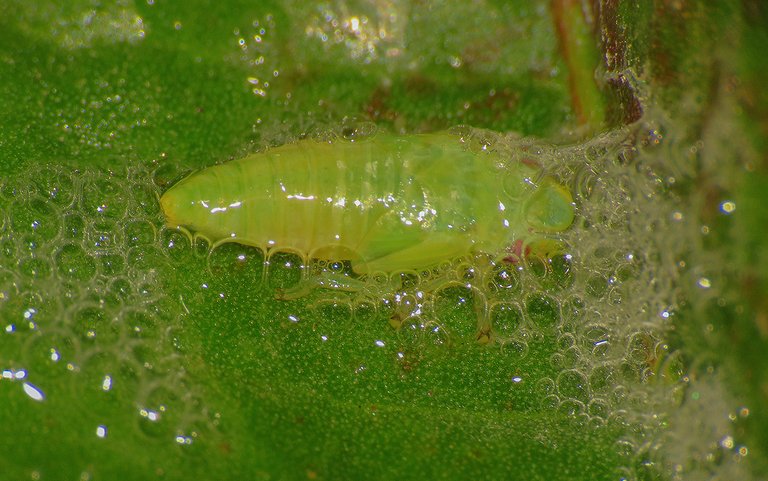
Since I destroyed the foamy nest to get these photographs at dusk ...
... its inhabitants had enough time to find or build another shelter without being exposed to the strong midday sun.
One of the snails, the biggest of them all, decided to remain in the same place but retreat into its shell.
Here you can see two adult Philaenus spumarius froghoppers. This species belongs to the Aphrophoridae family.
Both adults and nymphs feed through a proboscis by piercing and sucking the juices of a wide variety of herbaceous plants.
A bit later, and it was pretty dark at that point, I came across this colorful froghopper from the Cercopidae family.
The insect was resting at the top of another Rumex crispus plant.
The scientific name of the species is Cercopis vulnerata.
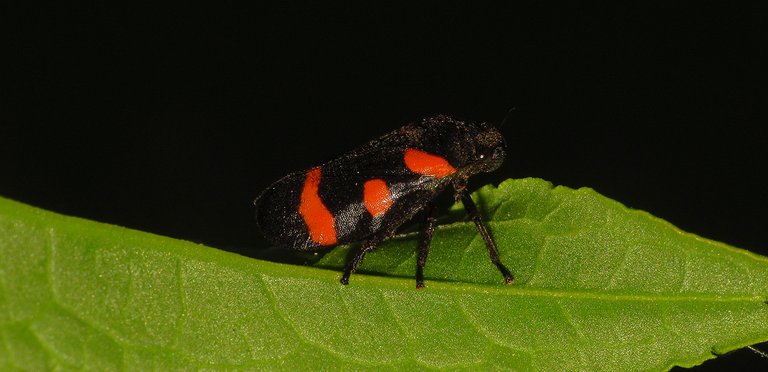
The nymphs of this species also produce foam that shelters them, but they aren't easy to see and photograph becouse their home is in the soil where they feed on the roots of the plants.
At some point, while I was photographing the froghopper, the iridescent Psilothrix viridicoeruleus beetle entered the frame for a second, and then, a bit later ...
... the considerably bigger Coreus marginatus bug walked through the scene.
This wide shot that shows a bit of the scenery and some low herbaceous plants in the foreground was taken about an hour or an hour and a half earlier. At that time ...
... I also photographed this interesting bug from the Pentatomidae family.
The scientific name of the species is Aelia acuminata. Its quite descriptive common name is bishop's mitre. The following photograph ...
... shows the same bug from a different angle.
These bugs feed on various wild grasses and cereals.
Aelia acuminata is very photogenic when posing on the straight vertical stems of the tall green grass, surrounded by many other stems that look the same and create a visually interesting pattern. Even if you don't care about the flora and fauna, the life on Earth has so much artistic-looking stuff to offer.
This is the last Hemiptera I'm presenting in today's post. It's another species from the rich and varied Pentatomidae family. Its scientific name is Peribalus strictus.
The following links will take you to the sites with more information about the protagonists of today's post. I found some stuff about them there.
https://en.wikipedia.org/wiki/Sonchus_oleraceus
https://en.wikipedia.org/wiki/Corizus_hyoscyami
https://en.wikipedia.org/wiki/Stictopleurus_punctatonervosus
https://en.wikipedia.org/wiki/Carpocoris_purpureipennis
https://en.wikipedia.org/wiki/Philaenus_spumarius
https://en.wikipedia.org/wiki/Cercopis_vulnerata
https://en.wikipedia.org/wiki/Aelia_acuminata
https://en.wikipedia.org/wiki/Peribalus_strictus
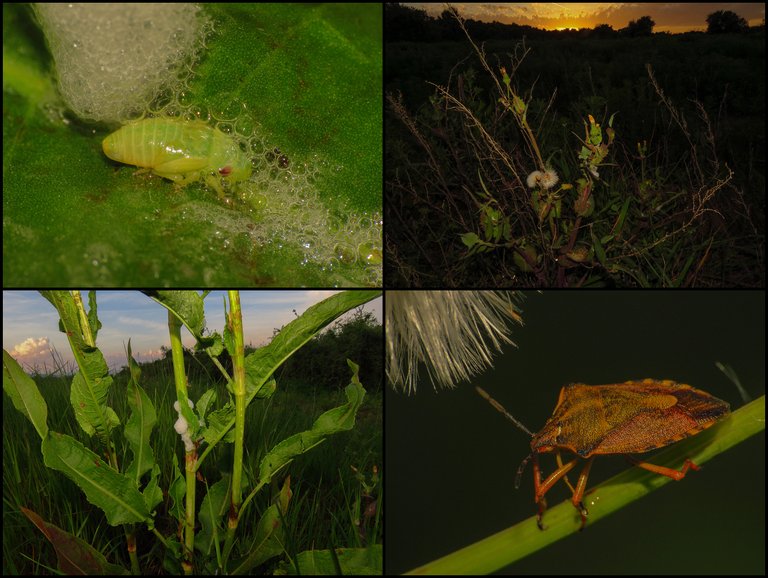
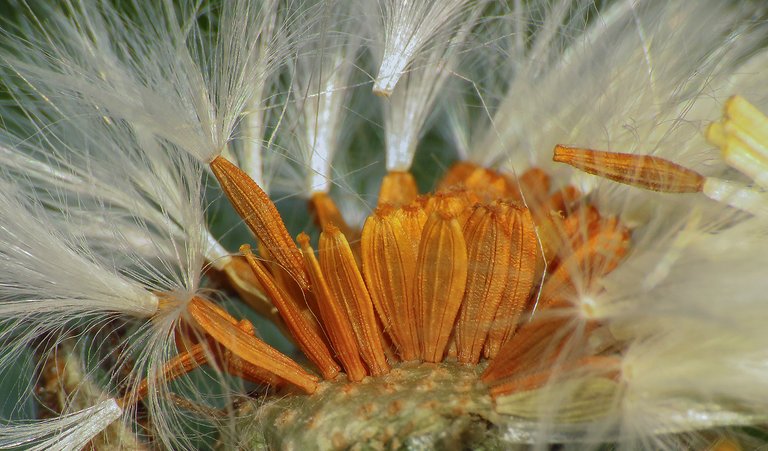
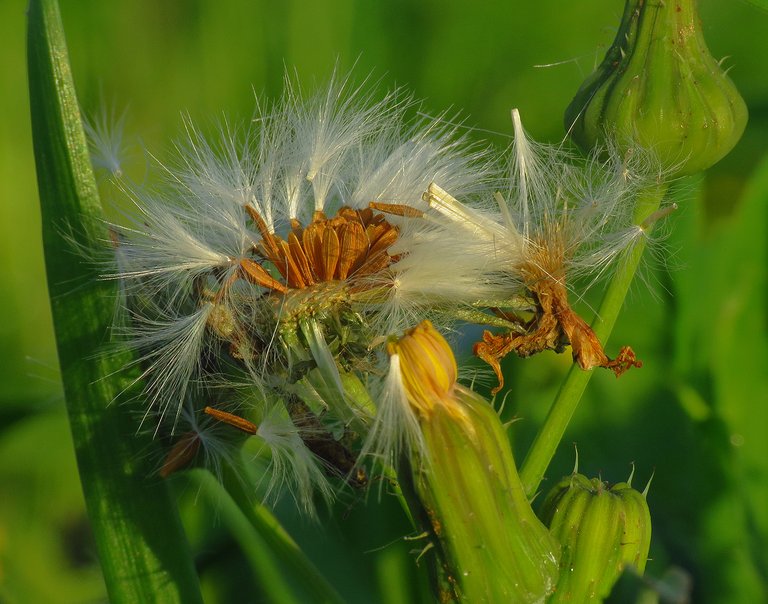
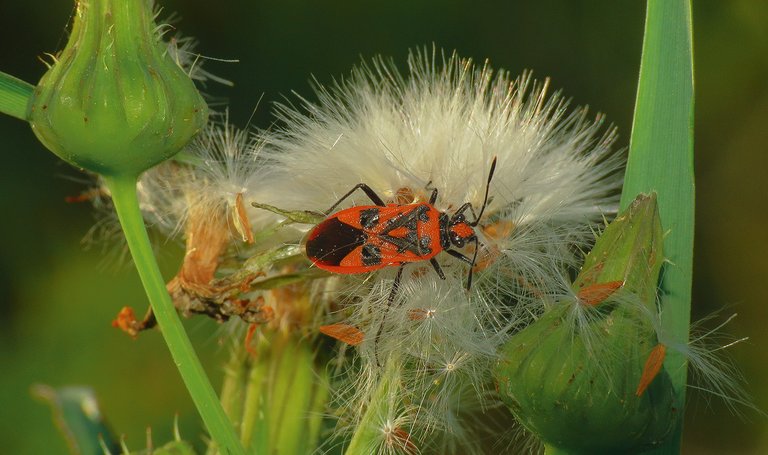
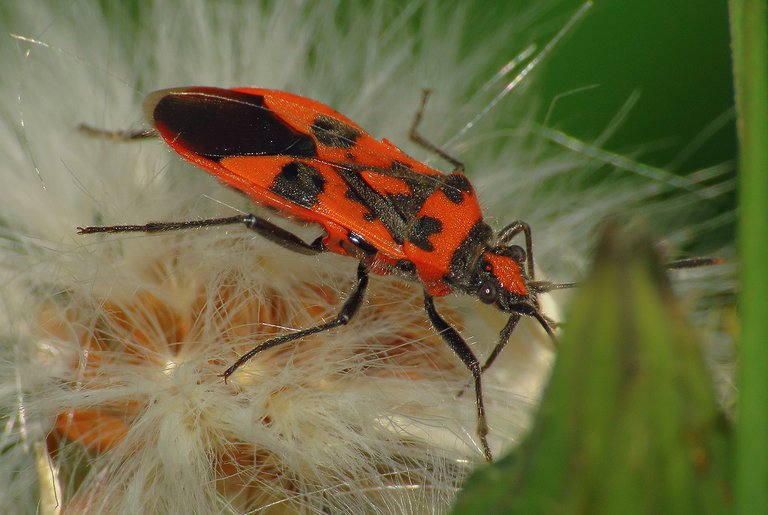
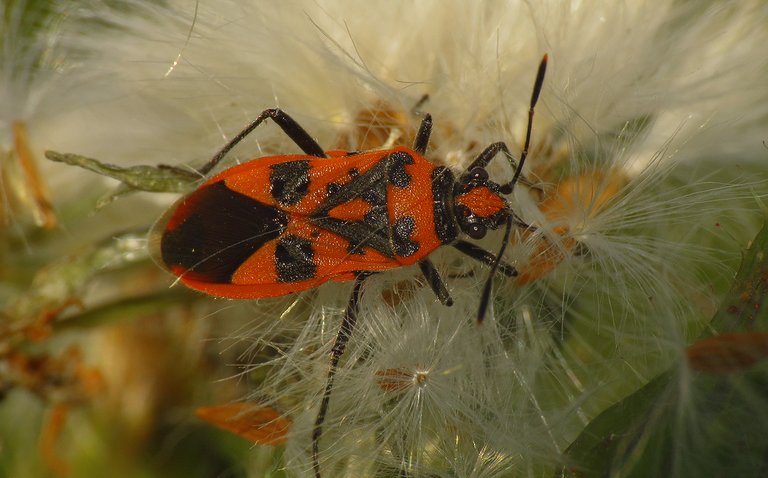
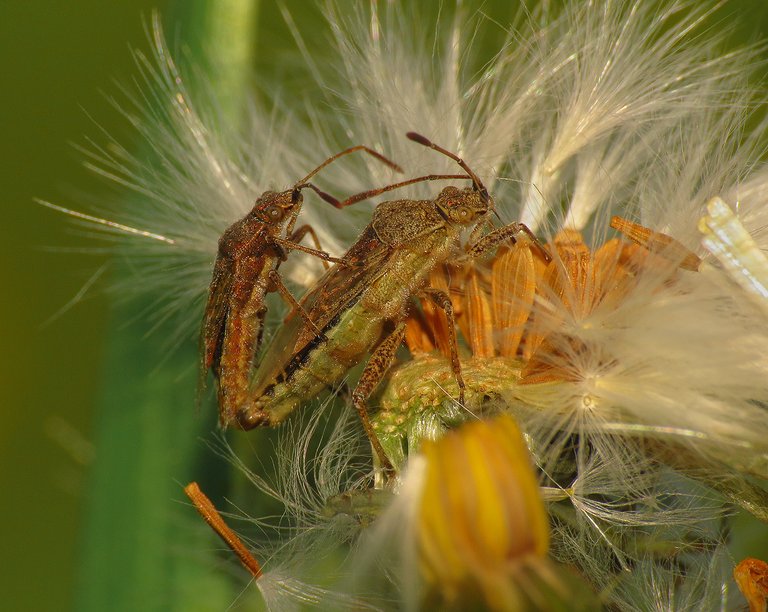
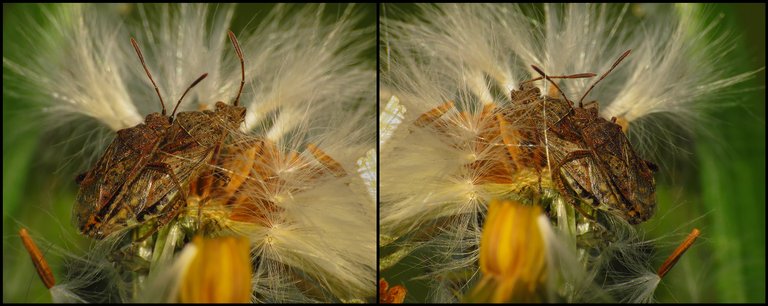
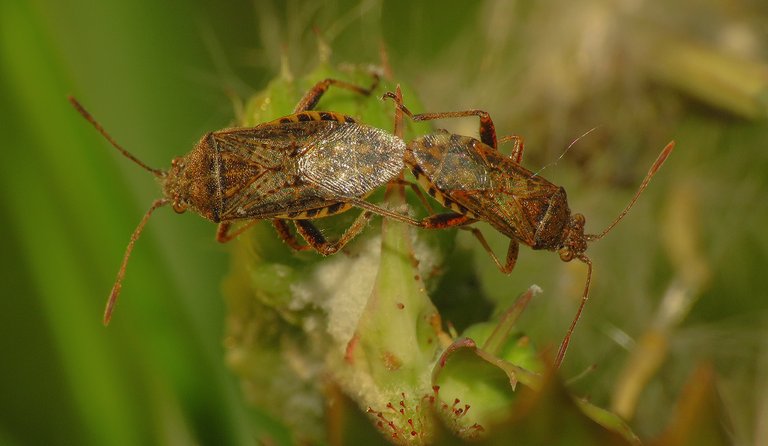
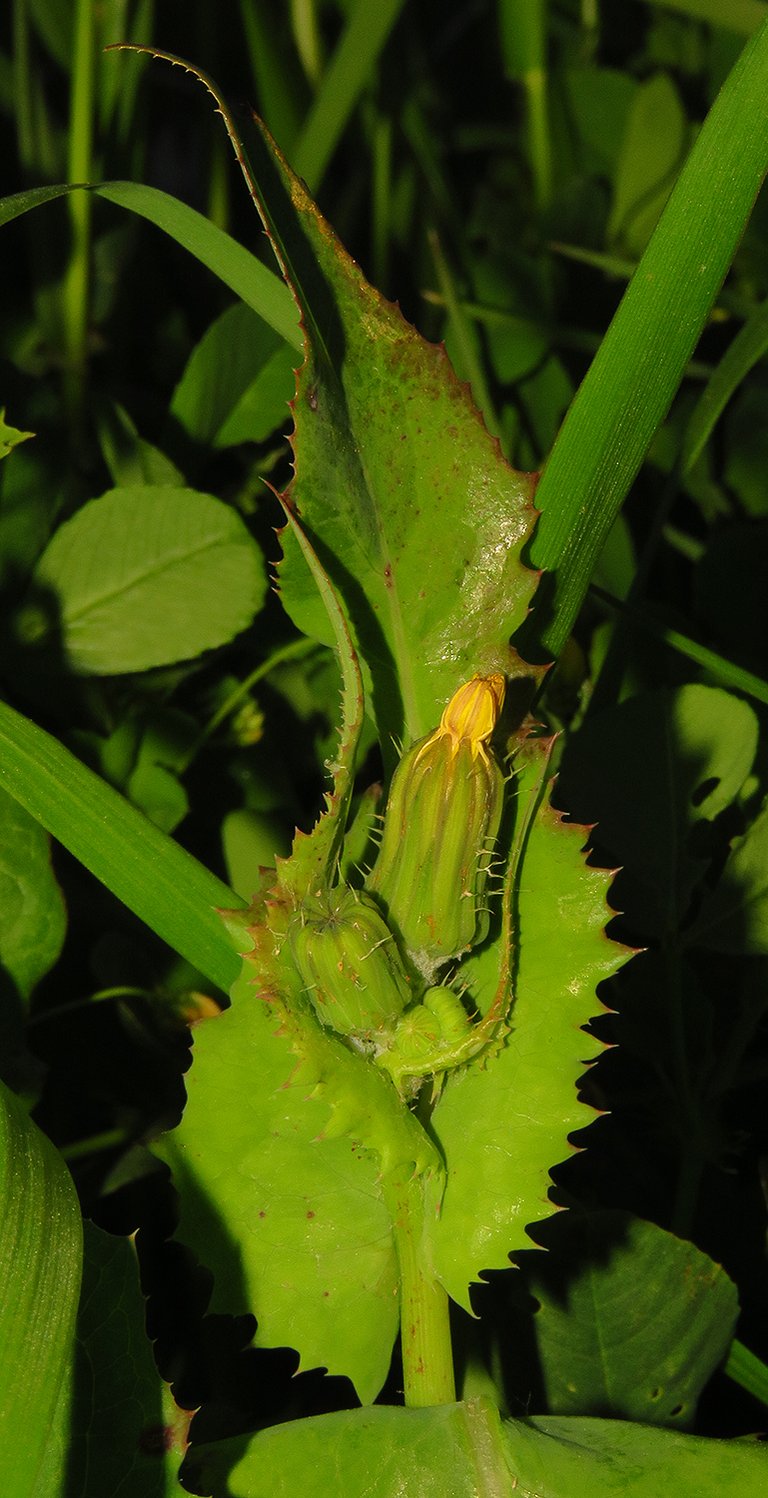
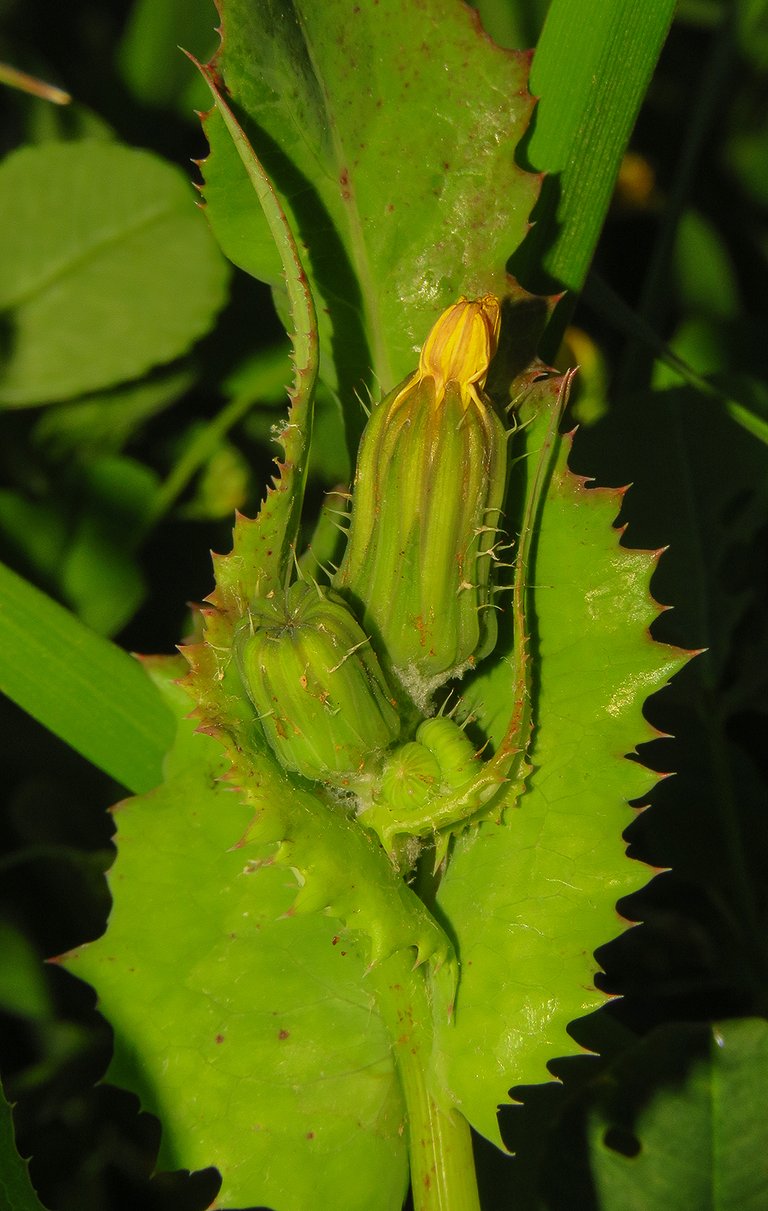
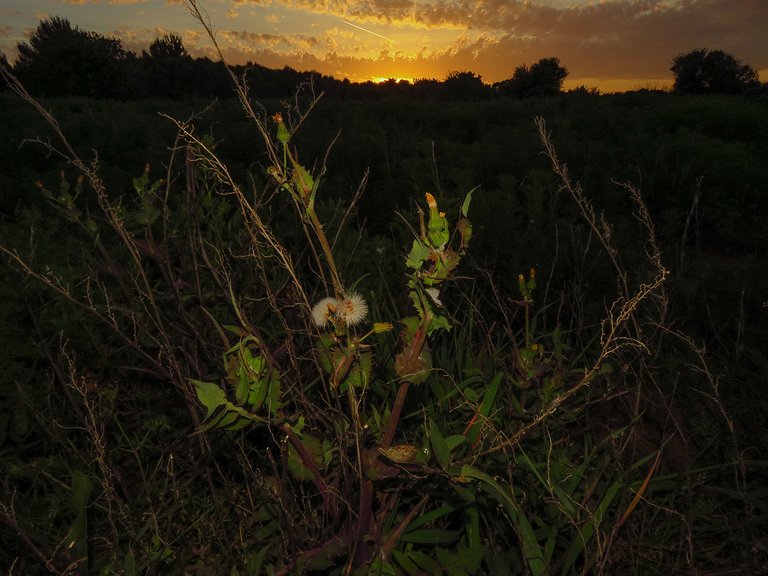
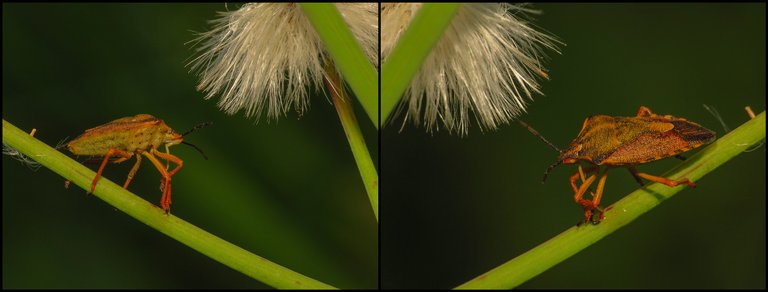

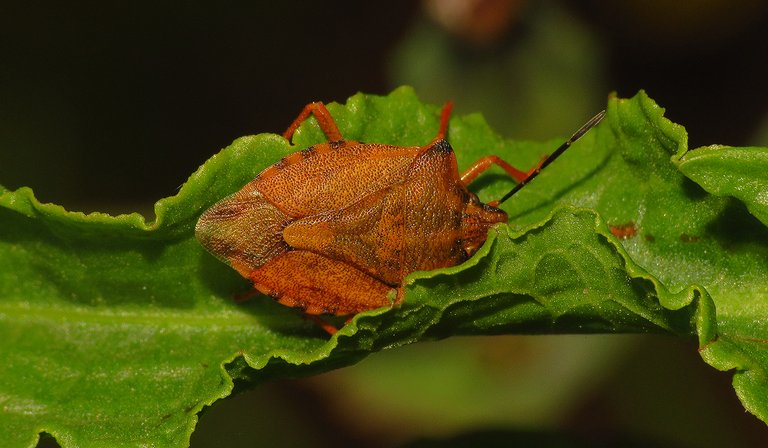
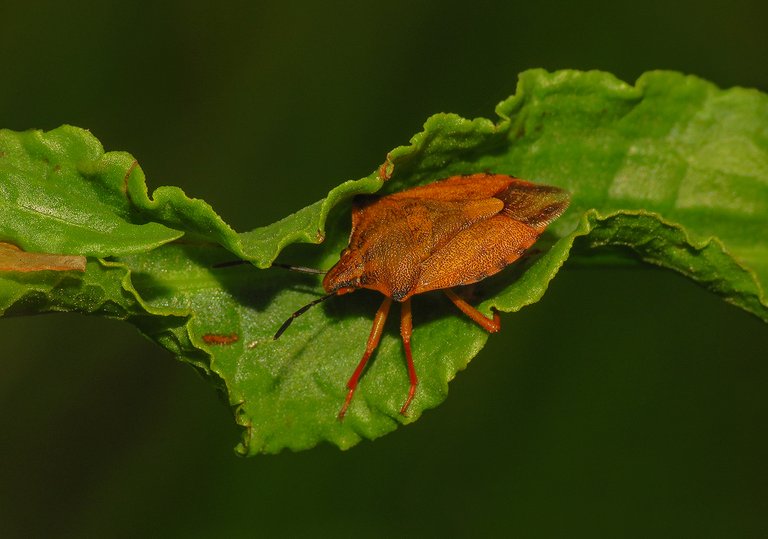
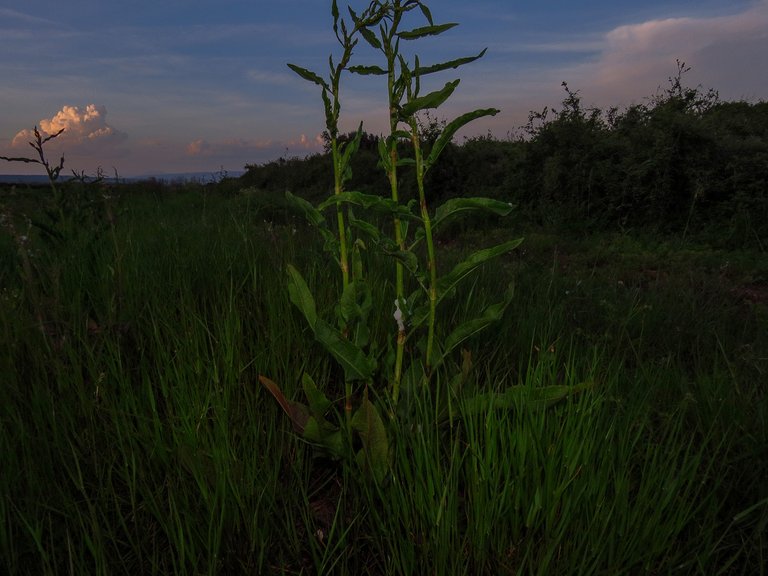
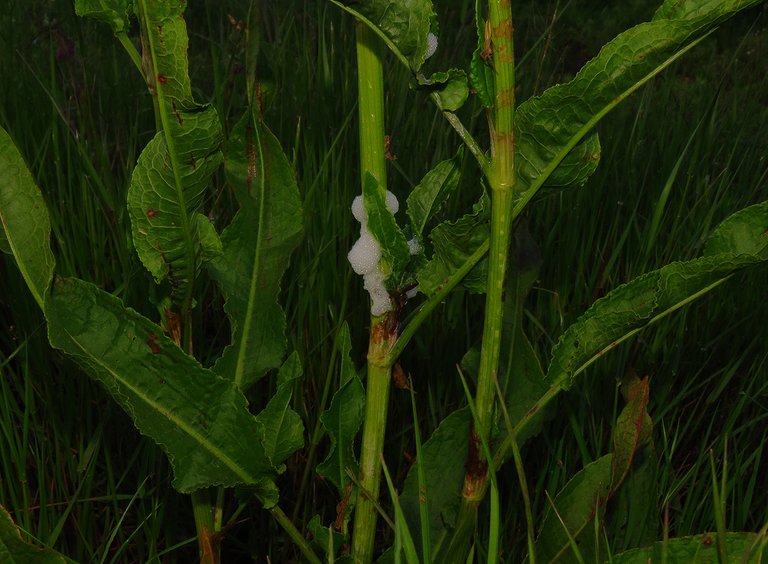
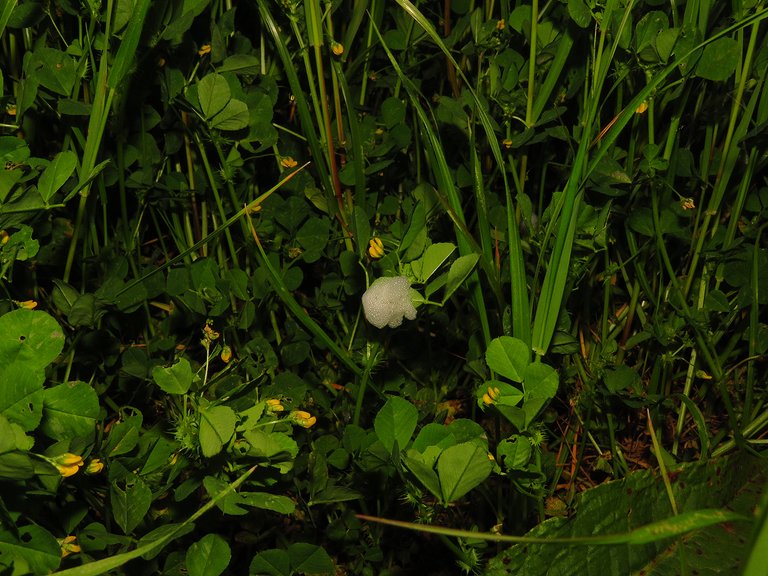
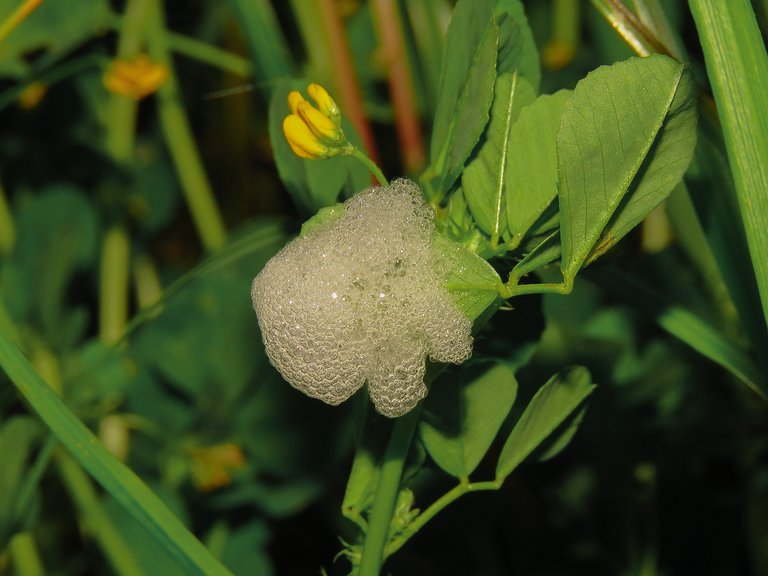
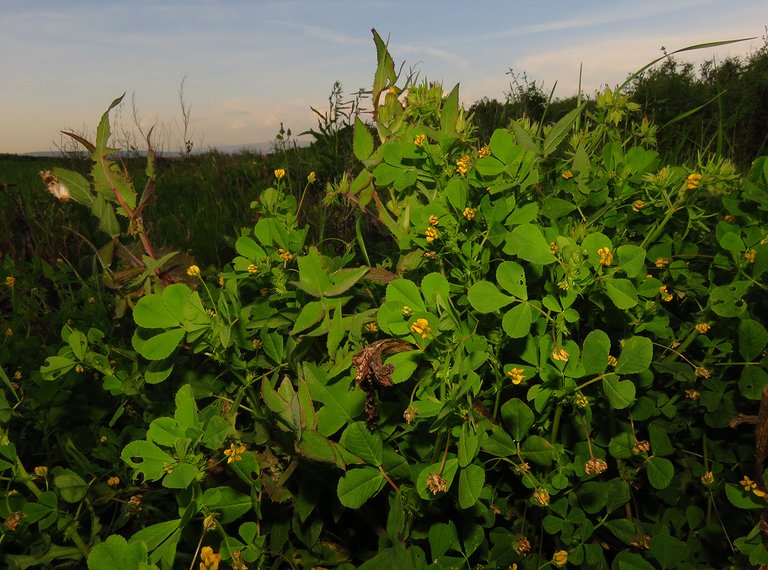
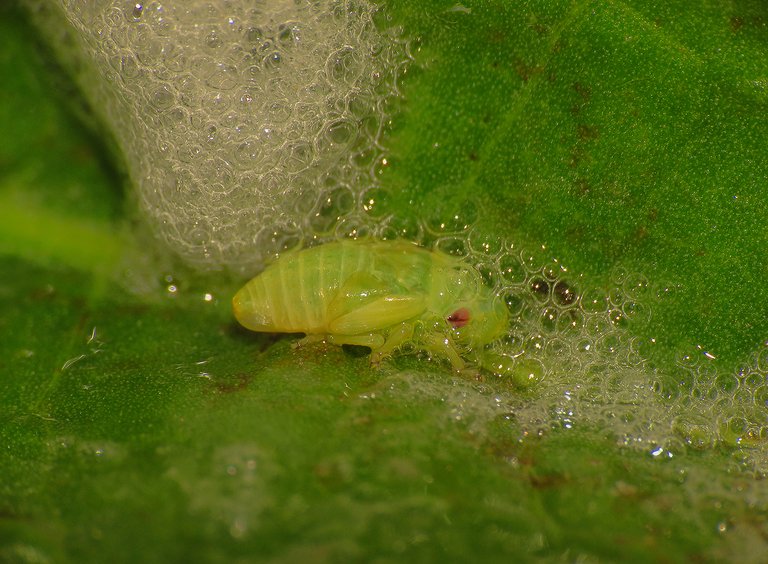
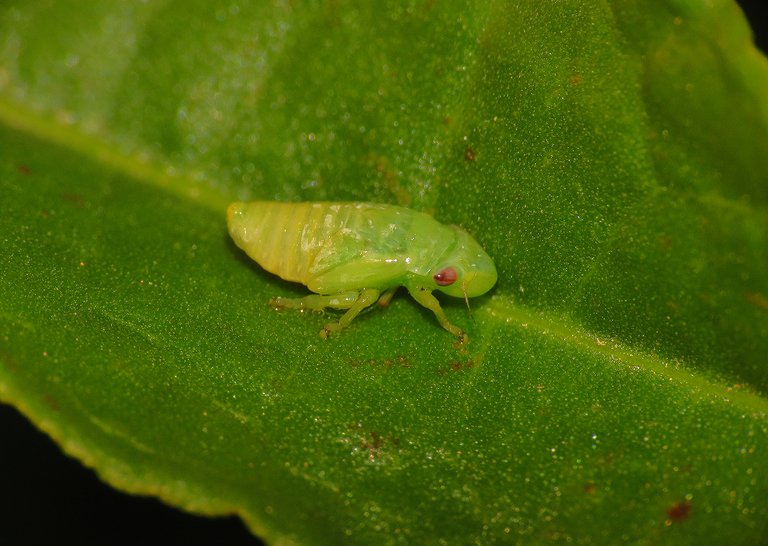

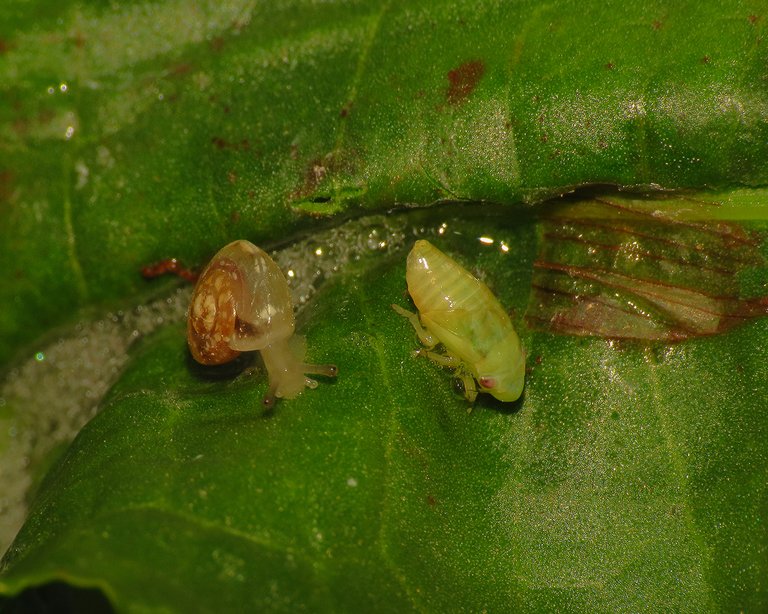
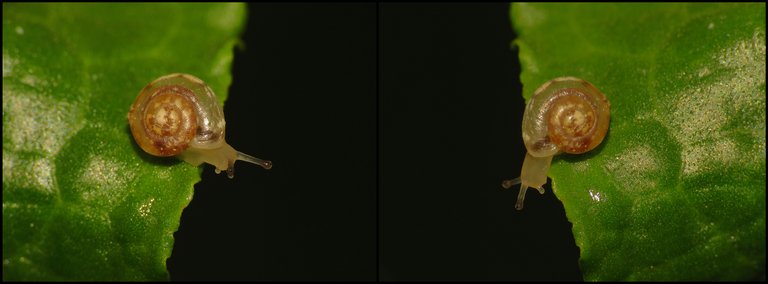
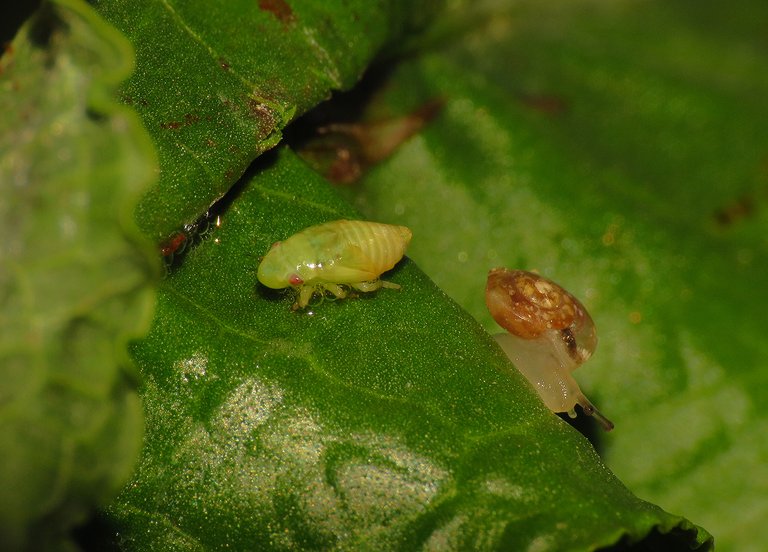
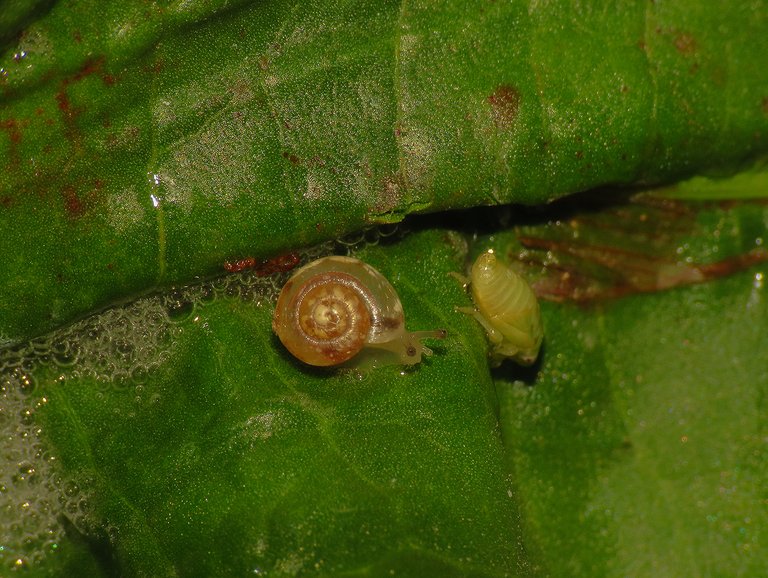
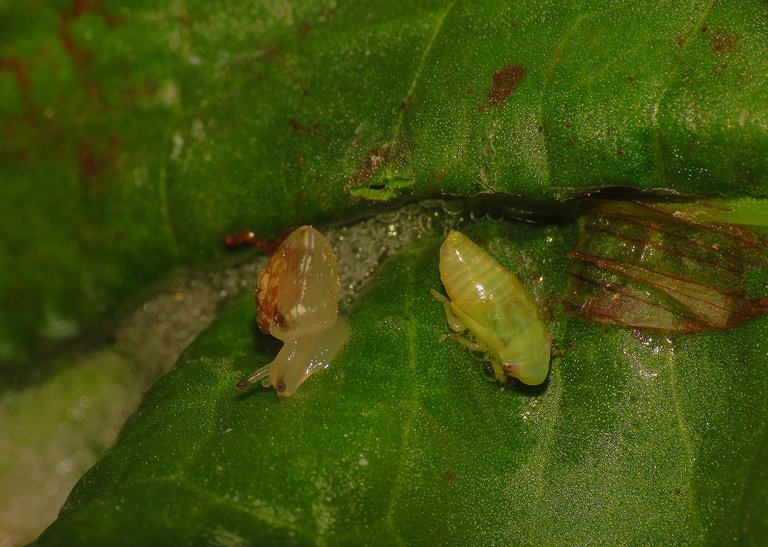
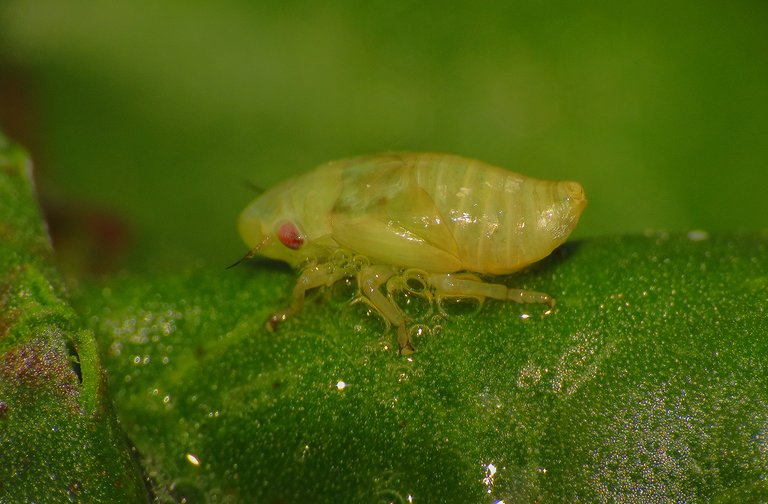
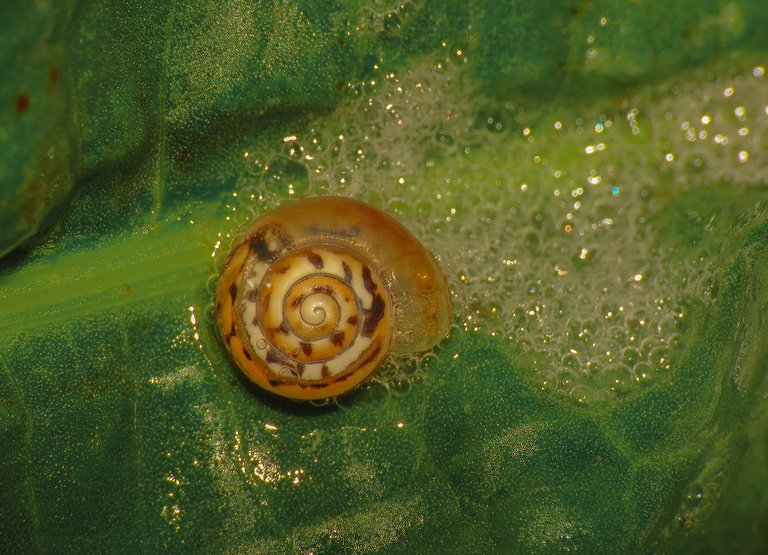
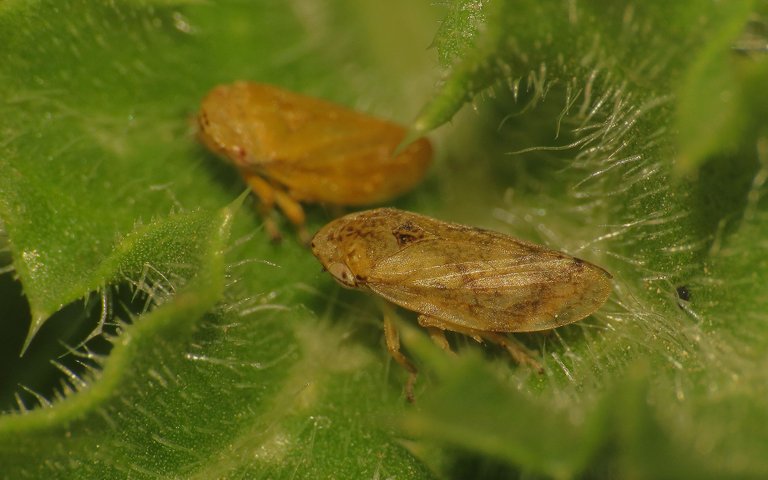

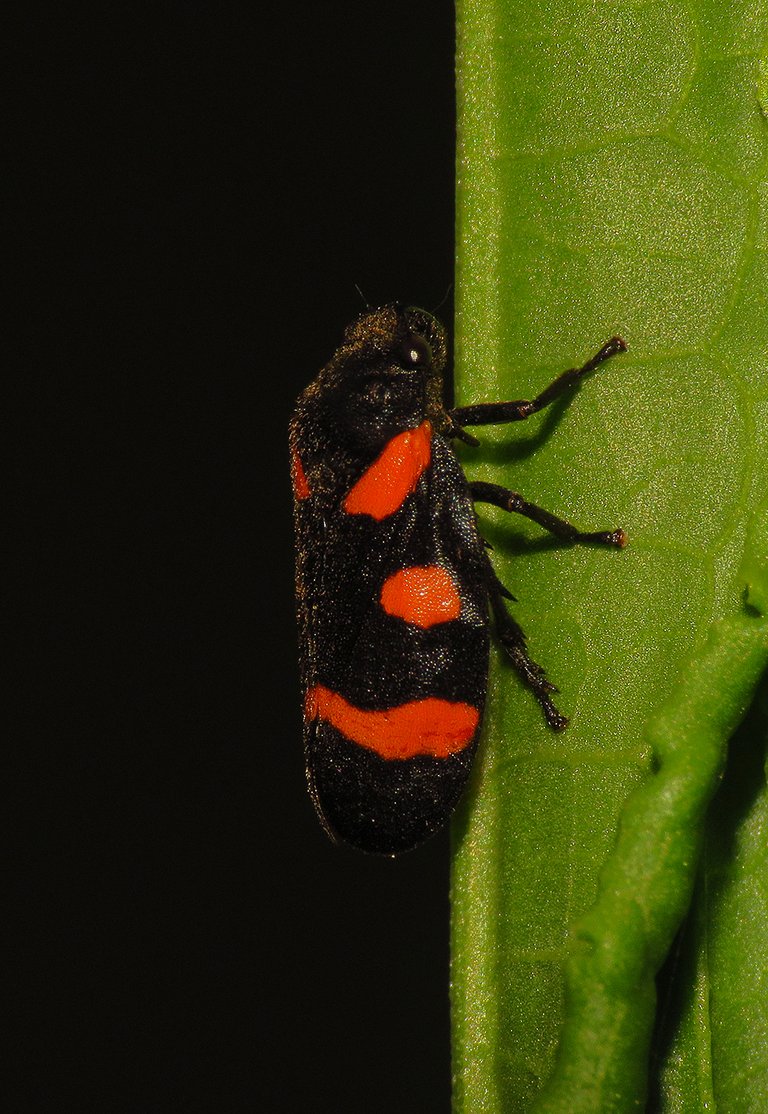
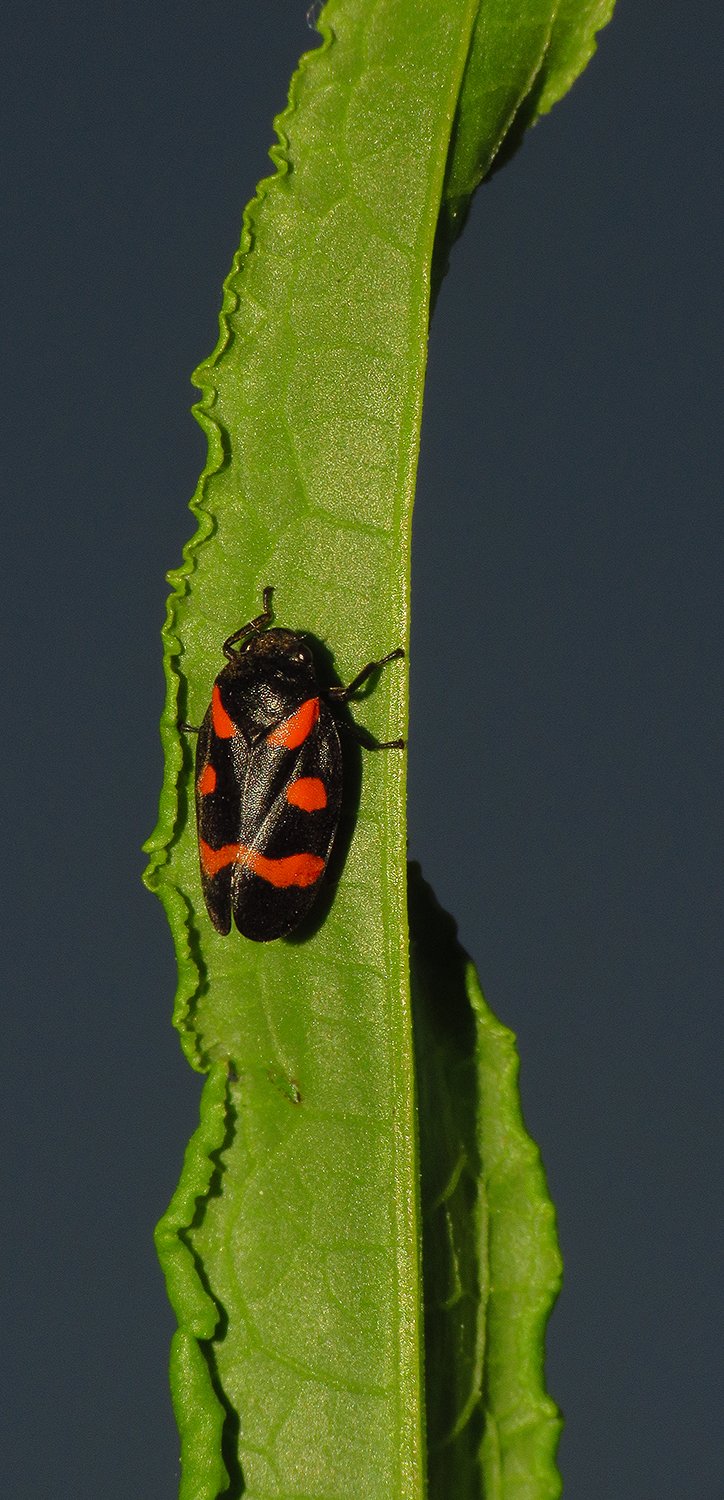
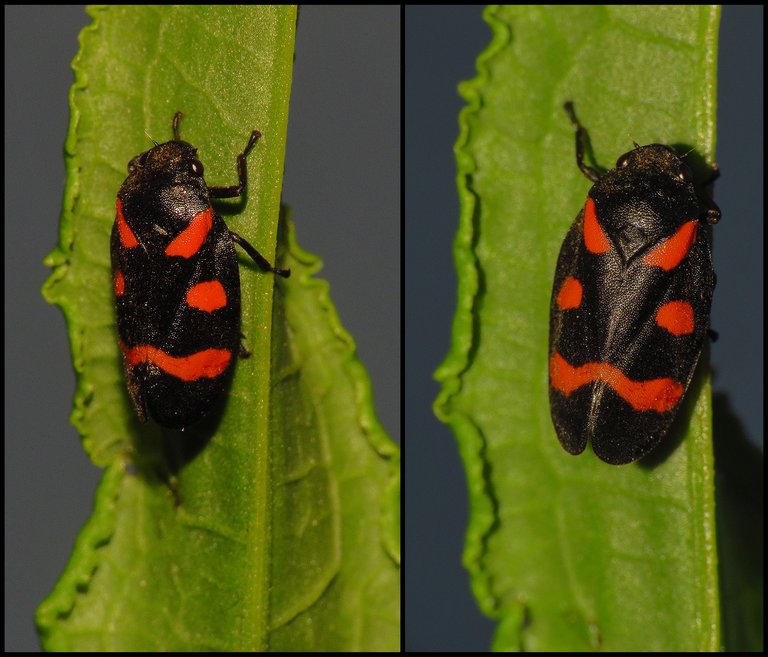
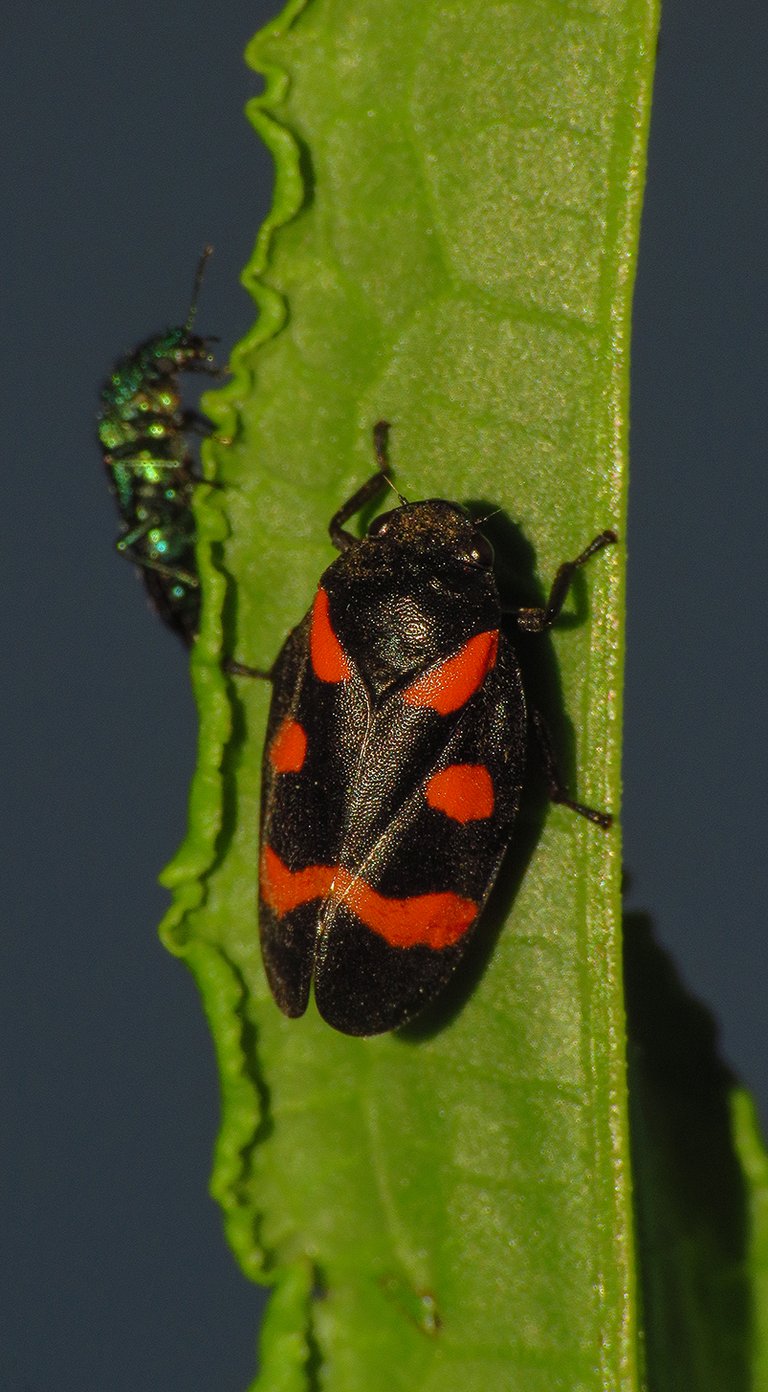
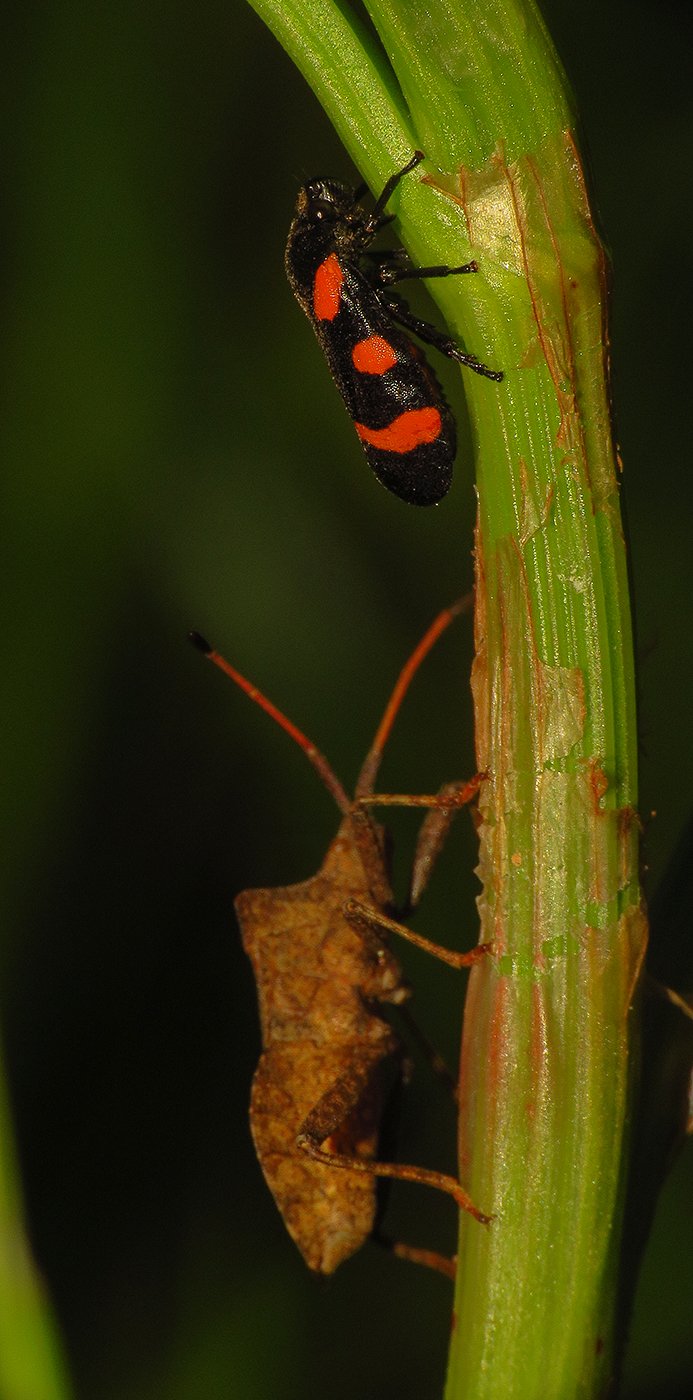
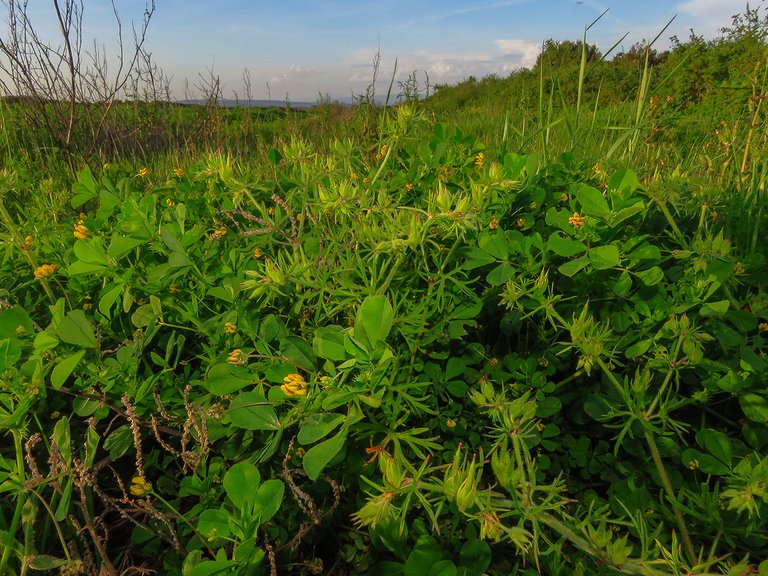
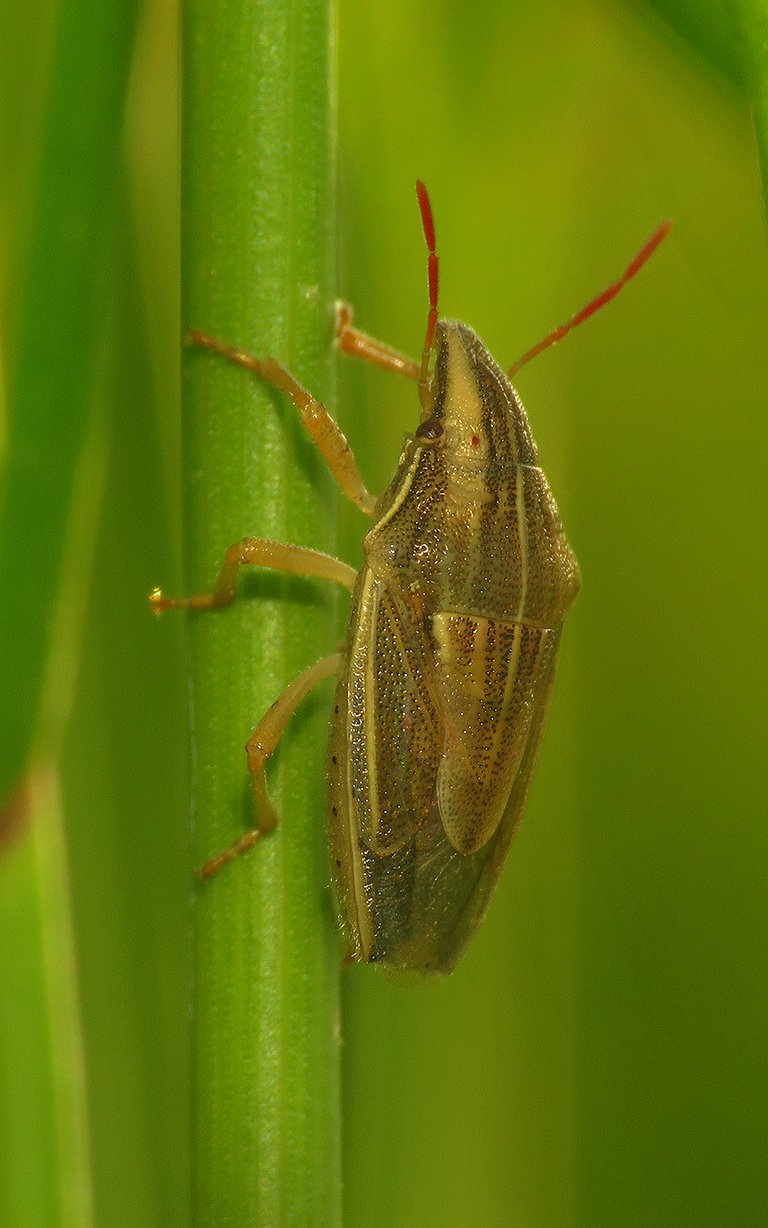
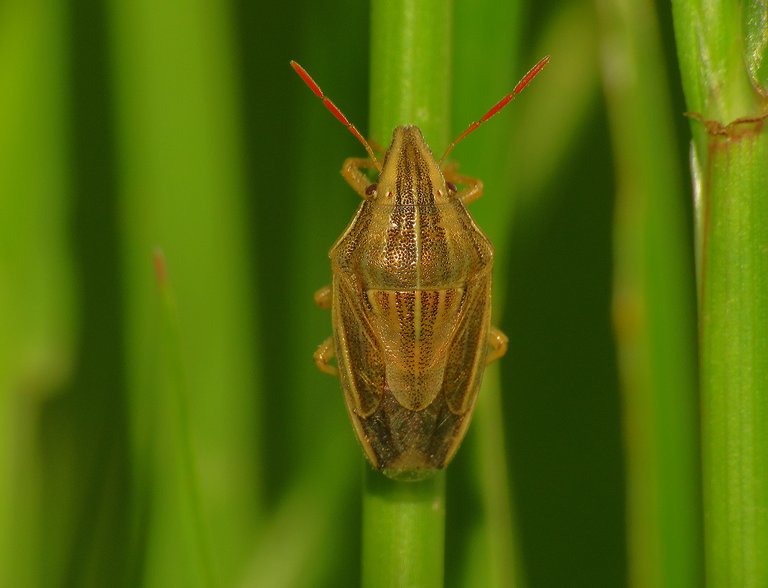
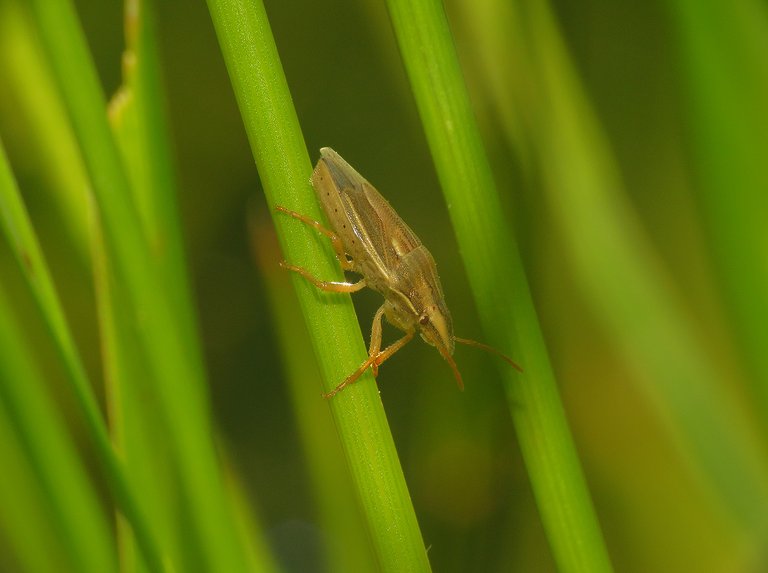
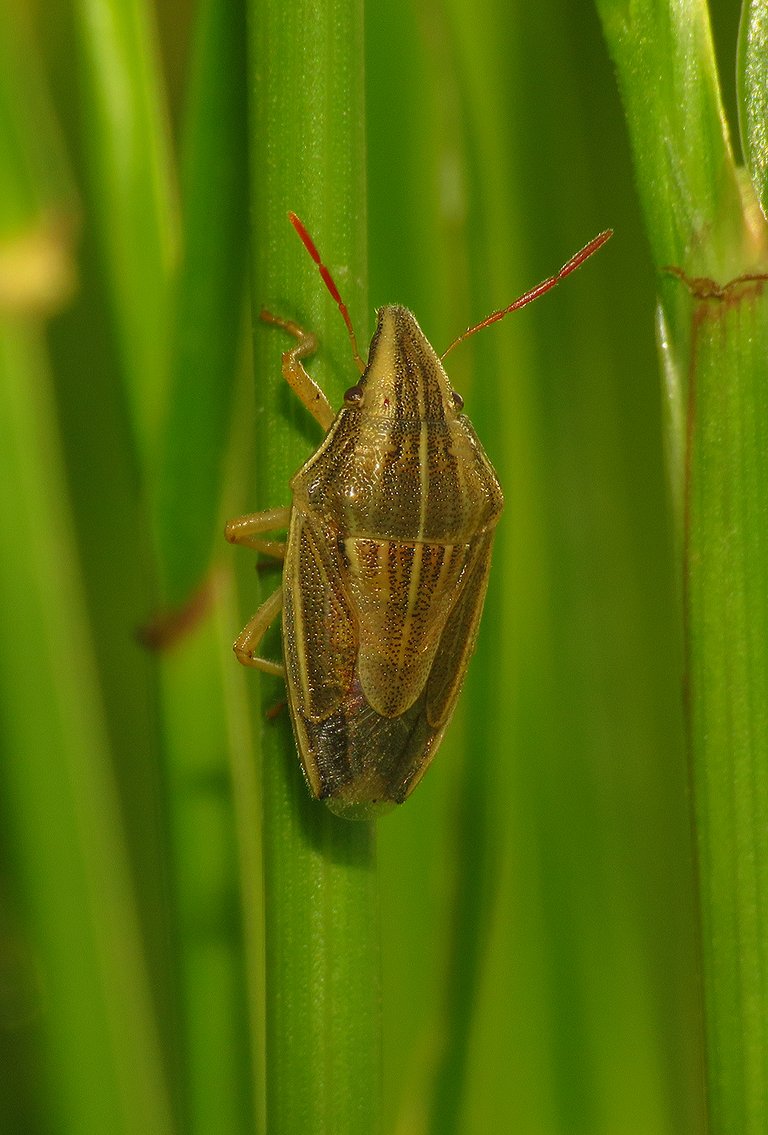
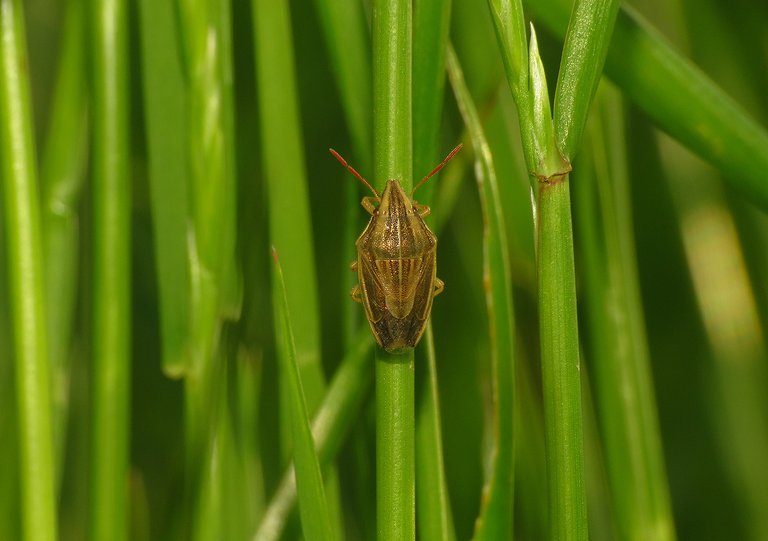
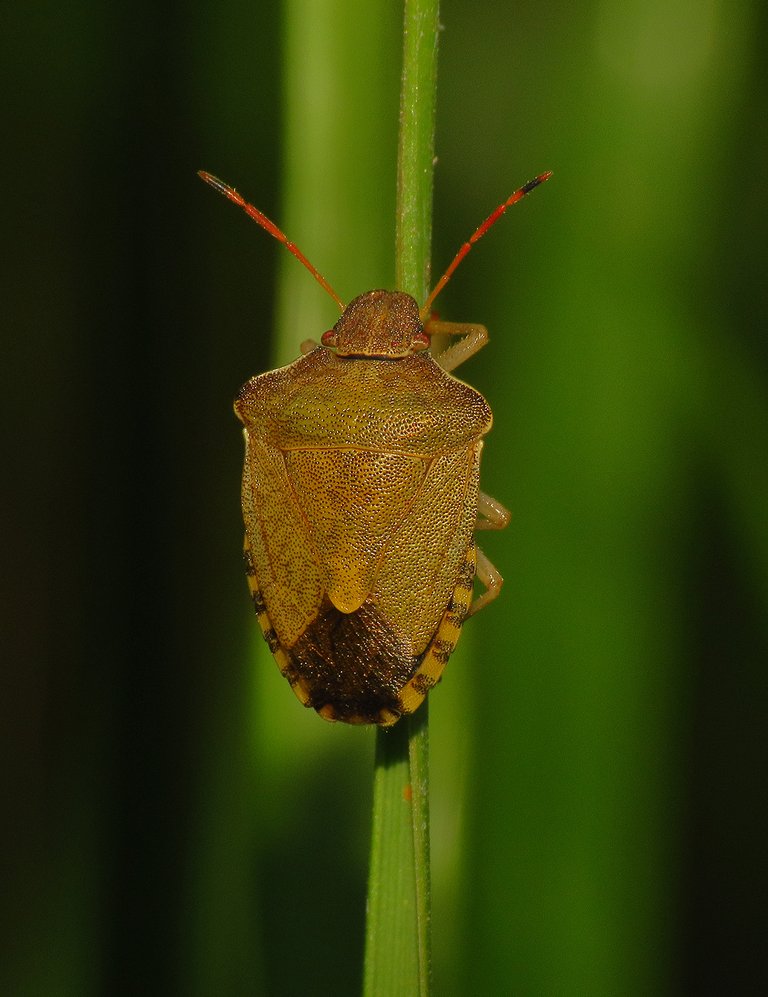
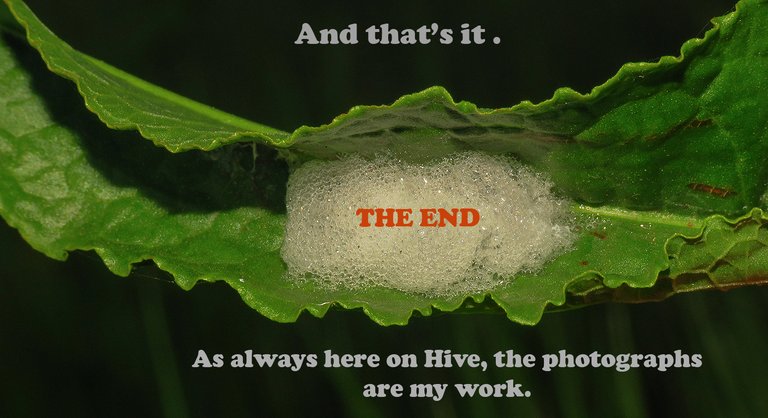
The pictures of the insects are amazing and shot with precision. I'm about to learn a few things about these insects. This is details analysis.
Wow!! These are professional shots, just like we see on TV but even better.
You did a great job!
Amazing photos!

!hiqvote
Thanks 🙂 Glad you appreciate this macro stuff.
What pictures! Which are absolutely enormous. These beetles in their armor. The pictures that are taken in the twilight, are so fateful. I am inspired by the photos.
The seeds of the southistle looks so attractive and magical. The shots are also really perfect
Amazing
Thank you. 🙂 Glad you like the post.
It’s just crazy that these bugs don’t do us any good because if they do, I’d have made one my pet
That orange bug looks very beautiful
They do actually, just not directly but they help to keep the ecosystem in balance
That's true. Some of them do us good directly, others indirectly. When we think of those who create problems in agriculture, we must also consider what a monocultural monster our agriculture has become in most cases.
In a biodiverse ecosystem, with a wide variety of plants, many species considered pests behave differently.
These are really amazing and beautiful shots you are able to take I must confess.
Thank you.
Beautiful and interesting photos as always, great job 👏 👍
🙂

We see a lot of these colored bugs here and it's really nice to see the beautiful colors on their bodies. You have shared beautiful photography of many insects.
Amazing macro photography stuff @borjan friend!
This is what I would call a "Macro Postcard" 😍📷💯
!PIZZA
🙂 Greetings from the meadow.
$PIZZA slices delivered:
@jlinaresp(5/15) tipped @borjan
Come get MOONed!
I love the part of the mating pairs
That’s caught in action
Nice one, my friend
Beautiful My friend. It's amazing. Bleesings and happy day
Thank you. 🙂 Have a great day.
https://x.com/lee19389/status/1918429576570581262
#hive #posh
The result of your camera is good, it is taking such beautiful pictures even in the evening.
Great shots! Thanks for sharing these beautiful pictures of nature
🙂
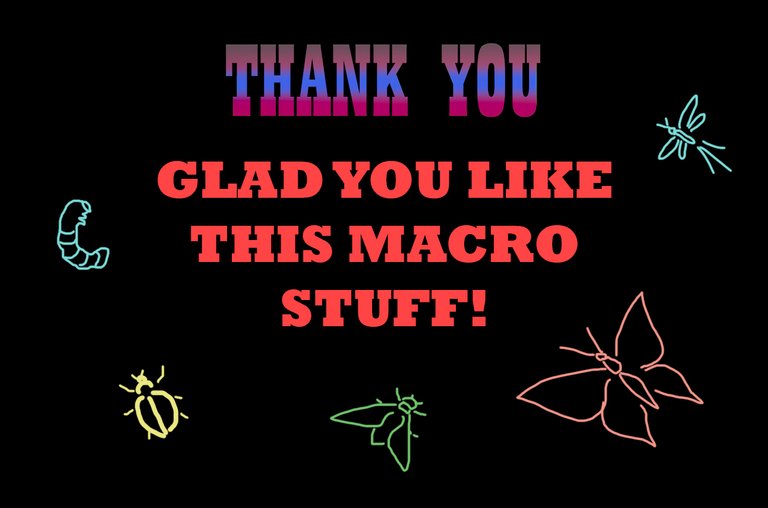
https://x.com/jewellery_all/status/1918603092745941354
#hive
Interesting survival mechanism by producing a protective foam to the outside world cant' get to the nymph, very cool. I didn't realize that some insects feasted on seeds like that, very interesting. You sure got a log of great macro photos in there of some very colorful insects. It looks like you were having you were having a good time out there!
I also noticed the bugs feeding on seeds only a few years ago. Then I read about it on the Internet. There's always something new in the macro world. 🙂 Glad you like the post.
I love how you mix up the time, tone, as well as the stories in every photos. !LUV
@borjan, @b-hive(1/1) sent you LUV. | tools | discord | community | HiveWiki | <>< daily
Wooow
So much beautiful discovery. I love the fact that the baby frog hopper was sharing the coziness of its abode with the cute baby snail with the translucent shell…the bugs are also beautiful looking too. The pictures are 💯
🙂